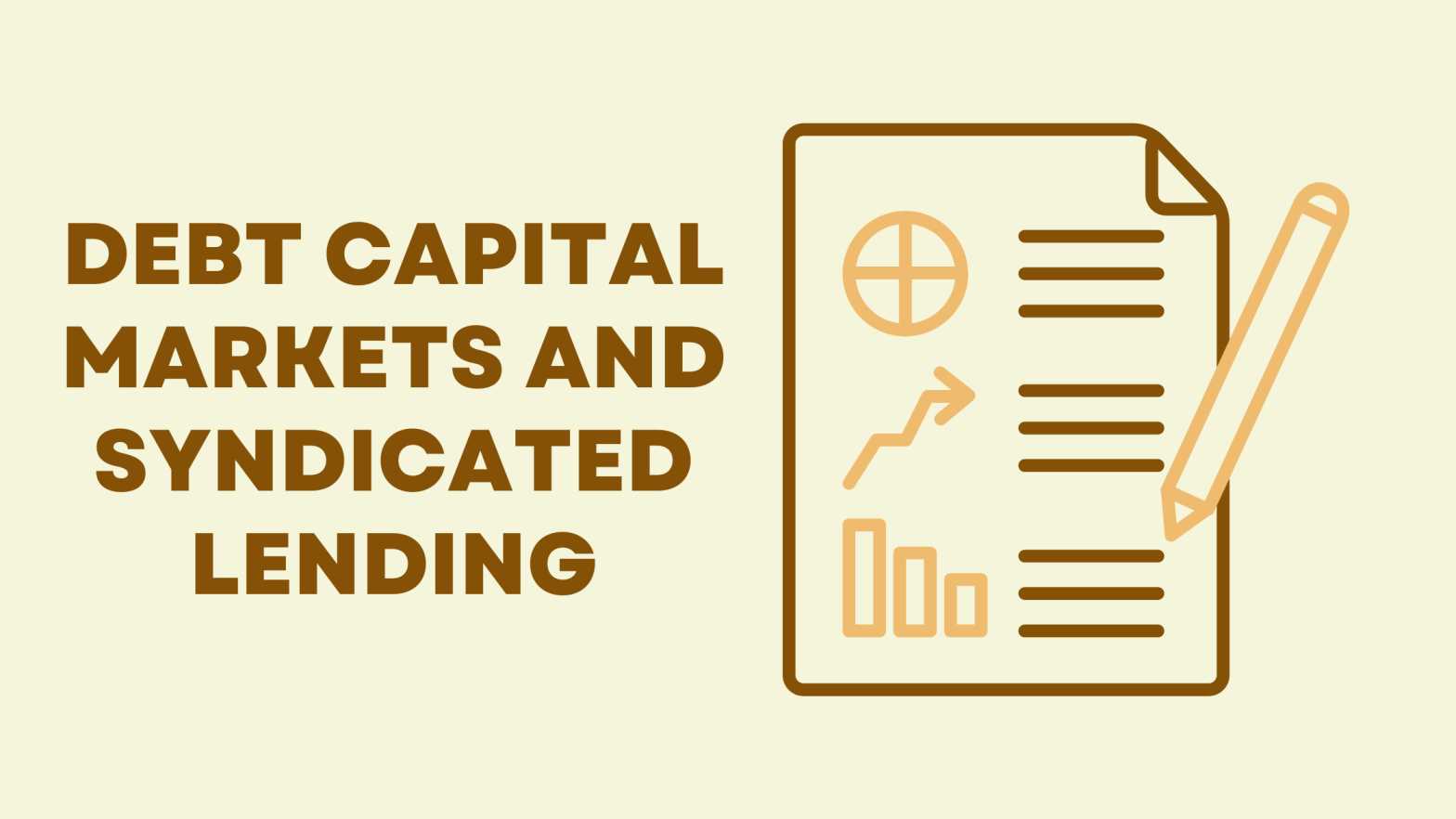Last updated on June 26th, 2024 at 11:21 am
Debt capital markets (DCM) and syndicated lending are two basic ideas in investment banking. DCM is a marketplace for firms and governments to buy and sell debt to earn cash or profit, whereas, in syndicated lending, a group of lenders distributes funds to a borrower under a single credit facility arrangement. This blog will cover detailed insights into these two corporate finances.
Debt Capital Markets
DCM sections of investment banking corporations support developing and selling debt securities for clients. Debt capital markets operate like the investment world comprising of issuers and buyers. The issuer sells a security for profit while the buyer purchases it to funds their goals. The DCM securities are bonds rather than a firm’s shares or stocks.
Types of Debt Capital Market Instruments
Some popular forms of bonds transacted in debt capital markets are corporate bonds, government bonds, and Credit Default Swaps. Firms and governments use debt capital markets to raise long-term funding for expansion or sustenance.
The debt capital market is a market where diverse organisations issue debt via bonds and loans to raise cash for growth, acquisitions, expansion, or diversification of funding sources. The fixed-income markets in DCM contain the following categories of borrowers and instruments:
Borrowers: Sovereign governments, semi-government and supranational organizations, financial institutions, and corporations.
Instruments: Debt capital market instruments (bonds and loans) varying in terms, risk profile, and conditions.
These instruments are issued to obtain funds for different goals such as paying down debts, supporting infrastructure upgrades, continuing current operations, increasing product lines, or establishing new locations.
Roles of a Debt Capital Markets Banker
Investment banks have debt capital markets units that deal with businesses, financial institutions, and governments to issue fixed-income instruments. They oversee the creation, structure, execution, and syndication of numerous debt-related products.
DCM bankers must understand the fixed-income market and know where credit spreads are, current deals being offered, and market movements. One can become a debt capital markets banker after passing specific license courses and regulatory tests.
Syndicated Lending
A syndicated loan is granted to a borrower by two or more banks, known as participants, controlled by a single loan agreement. The loan is usually administered by one bank, the agency bank, on behalf of the syndicate member.
Syndicated loans are issued by a collection of lenders that combine to credit a major borrower, such as a firm, an individual initiative, or a government.
Each lender in the syndicate provides part of the loan amount, and they all share in the lending risk. The responsibility of each lender is restricted to their portion of the overall loan.
Advantages and Purpose of Syndicated Lending
Syndicated lending primarily aims to distribute the risk of a borrower default across numerous lenders, banks, or institutional investors, such as pension funds and hedge funds.
Syndicated loans are also employed in the leveraged buyout market to support significant business deals. Some advantages of a syndicated loan include reduced time and effort needed in getting the loan, access to a bigger pool of cash, and the opportunity to share risk across numerous lenders.
Secondary Market for Syndicated Loans
The secondary market for syndicated loans is a market where shares of syndicated loans can be sold after origination, altering the makeup of the syndicate. Here are some significant aspects concerning the secondary market for syndicated loans:
- Efficient risk sharing: It provides more efficient geographical and institutional risk sharing. Large US and European banks originate loans for emerging economies, subsequently syndicated to other banks and non-bank financial entities.
- Investors: The syndicated loan market draws various investors, including collateralised loan obligation structures (CLOs), mutual funds, hedge funds, pension funds, brokers, and private equity organisations.
- A major source of funding: It is a major source of financing for many big and medium market enterprises in the US.
- Secondary trading: Secondary debt trading indicates one investor acquiring debt on the secondary loan market from another investor, who may have become a lender upon origination. Shares of syndicated loans can be exchanged in the secondary market, altering the composition of the lending syndicate.
Conclusion
A thorough understanding of DCM and syndicated lending is essential for individuals looking to build a career in investment banking and other financial services. Sound knowledge of the concepts can help individuals land lucrative jobs at premium banking institutions.
The Certified Investment Banking Operations Professional (CIBOP) programme by Imarticus Learning aims to transform individuals into investment banking operations specialists by teaching them the principles of financial markets, investment banking, and operations. This investment banking course is internationally accredited and industry-aligned, incorporating trading simulations and case studies to ensure practical learning. This certification in investment banking is designed to provide a comprehensive understanding of debt capital markets and syndicated lending.

